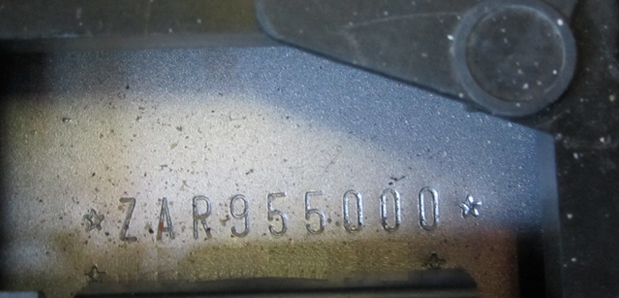
VIN was first used in 1954. From 1954 to 1981, there was no accepted standard for these numbers, so different manufacturers used different formats. In 1981 worlds car makers from Europe and USA set the one common format of present VIN Number. It required all vehicles sold to contain a 17-character VIN, which does not include the letters I (i), O (o), and Q (q).
The first 3 characters of VIN number uniquely identify the manufacturer of the vehicle using the world manufacturer identifier. Second section is vehicle description contain characters from fourth to eight positions and includes informations about vehicle type and may include automobile platform used, the model, and also body style. The last one section with characters position form 10th to 17th is vehicle identifier section and is used by the manufacturer to identify every vehicle.
In present world we have at least four standards used to calculate the VIN:
- FMVSS 115, Part 565: Used in United States and Canada
- ISO Standard 3779: Used in Europe and many other parts of the world
- SAE J853: Very similar to the ISO standard
- ADR 61/2 used in Australia
Peugeot VIN decoder – enter VIN number
Remember that before you buy, check the history of the vehicle. You do this by typing the VIN Number Peugeot below:
The report is an indispensable aid to checking a used Peugeot. The information contained in it constitutes a basic compilation of data necessary to know its history. All the information contained in the report is an indispensable element of checking the car. We invite you to familiarise yourself with the scope of information available on the autoDNA report.
VIN number – what is it?
The VIN, or Vehicle Indentification Number, is a unique vehicle identification number that contains numerous and important pieces of information about a car. The VIN includes information such as country of manufacture, model year, drive type, engine version, equipment options, among others.
VIN numbers were first used in 1954 in the United States. Car manufacturers such as Peugeot were already marking their cars in this way. Marking of this type began to be used by manufacturers in Europe. However, the first numbers looked very different. It was not until the 1980s (in 1981 to be precise) that the world’s manufacturers, together with the US manufacturers, finally agreed on this issue.
In 1981, the National Highway Traffic Safety Administration in the United States standardised the format. Cars sold should contain a 17-character VIN that does not contain the letters I (I), O (o) or P (q) (to avoid confusion with the numbers 1 and 0).
A common standard has therefore been developed to facilitate the work of the police, insurance companies and used car dealers. From now on, the VIN of each car has 17 characters – letters and numbers.


 EN
EN  PL
PL  RU
RU  DE
DE  HU
HU  EE
EE  LV
LV  RO
RO  SI
SI  CZ
CZ  LT
LT 